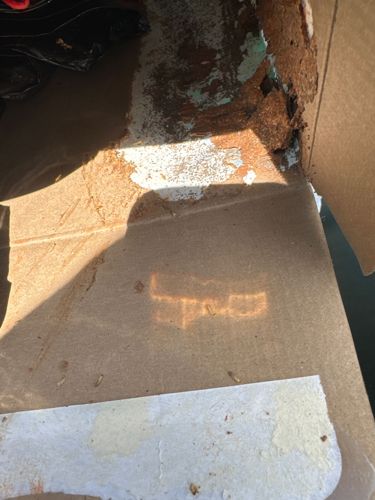Termite
Scientific Name: Rhinotermitidae (e.g., Reticulitermes spp.) or Kalotermitidae (e.g., Incisitermes spp.) are common genera, but specific species are difficult to identify from this image.
Order & Family: Order Isoptera (now subsumed into Blattodea, the cockroach order), Family Rhinotermitidae (Subterranean Termites) or Kalotermitidae (Drywood Termites) are common examples visible in residential settings. Based on the presence of mud-like workings, subterranean termites are suggested.
Size: Workers and soldiers typically range from 0.2 to 1.5 cm (0.08 to 0.6 inches) in length. Reproductive alates (winged termites) can be larger, up to 2.5 cm (1 inch) including wings.

Natural Habitat
Damp, dark, and humid environments. Found in soil, inside wooden structures, dead trees, and often in areas with moisture problems adjacent to or within homes and buildings.
Diet & Feeding
Cellulose-based materials such as wood, paper, fabric, and other plant matter. Some species also consume fungi.
Behavior Patterns
Termites are social insects that live in colonies, often numbering in the millions. They build elaborate nests within their food source or in the soil. They are highly secretive and avoid light, often tunneling through materials or creating mud tubes to travel. They undergo incomplete metamorphosis: egg, nymph, adult. Reproductive termites (alates or 'swarmers') will fly out of the colony to establish new ones, especially during warm, humid conditions.
Risks & Benefits
Potential Risks: Termites are significant pests that can cause extensive structural damage to homes and buildings, leading to costly repairs. They can compromise the integrity of wooden structures and destroy furniture, books, and other cellulose-containing materials. Potential Benefits: In natural ecosystems, termites play a crucial role as decomposers, breaking down dead wood and other organic matter, which contributes to nutrient cycling and soil health.
Identified on: 9/2/2025